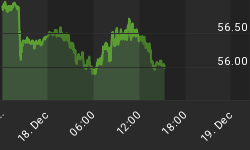Traders have a saying to "sell in May and go away," which refers to the typical slowdown in market activity and big news during summer months. The saying originated on Wall Street, where many financial professionals use the summer months to escape the city and spend time with their families away from their trading terminals.
This summer, unfortunately, has seen no such slowdown. News has continued coming out and markets have been experiencing considerably strong volatility, relative to their usual lull.
Given all that's going on in the markets, it's important for investors to take the right perspective - what would be termed in manufacturing as "rightsizing." In this instance, investors thinking about the future of the economy and the markets can't look too far into the future, or too near.
For example, we all have broad conceptual notions of how markets should work. Theories on monetary policy and the way government should interact with markets abound; and so too do various takes on foreign policy, energy policy, the role of unions, and so on.
Given all these grand issues, it's far too easy to get wrapped up in the big picture questions. It can be like pondering the meaning of life, or the origins of the universe. Eventually we begin to look past everything around us - the small problems look too numerous to solve. Investors can become paralyzed - a death sentence in the markets.
On the other hand, it's also extremely easy - and probably more common - to get caught up in the daily grind of the markets. Common symptoms include watching market action hour-by-hour and waiting for headlines to come out to see how markets react.
Thankfully, the prognosis is good. Business news addicts need to realize that while it's important for active investors to keep one finger of the pulse of markets, constant exposure can lead to overload. In the end, it can be hard to see the forest through the trees.
Plus, trying to pair headlines with market action in a cause-and-effect relationship is an exercise in futility. The markets are a giant puzzle-game, with millions of participants on pieces that constantly change shape. Trying to nail down one move in the markets that resulted from a single headline is like trying to find a needle in a stack of needles.
In any event, the markets have been extremely choppy over the past couple months, which isn't surprising. With a lot of troubles in Europe seemingly coming to a head, and election season in the US drawing near - and with it, all the prognostications about the future of our country - some anxiety is to be expected.
However, long-term prospects for the US economy remain EXTREMELY bright. Money is beginning to turn over once again as people begin to resume borrowing. Consumer confidence is up, while housing numbers are continuing their substantial recovery. While home prices may not be back to their peaks, they're considerably off their lows; and new construction is picking back up.
More important, manufacturing has remained steady after seeing a drop-off in growth. Though some steel mills have shut their doors, others have opened or are under new construction. And let's not forget that the United States is still producing, shipping and buying more than 14 million cars a year right now.
This is especially significant, given the prospects for long-term growth in US manufacturing. Over the past several years we have already started pointing out companies bringing manufacturing back to the US that had been outsourced. Problems with quality control, theft of intellectual property, and rising costs of labor and shipping have caused a number of companies to bring production operations back; and we expect many more to follow.
Conclusion: While investors can get bogged down in the day-to-day or find their heads in the clouds over big-picture issues, good times are ahead for the United States economy and, as a byproduct, for the markets. It's important to remember that when we find ourselves getting drawn into the doomsday machine that is our national media, or the blood-sport of national politics. At the end of the day, our economy is like a train - any president can make it run slower or faster, but they can't stop it and they can't fly it to the moon.















